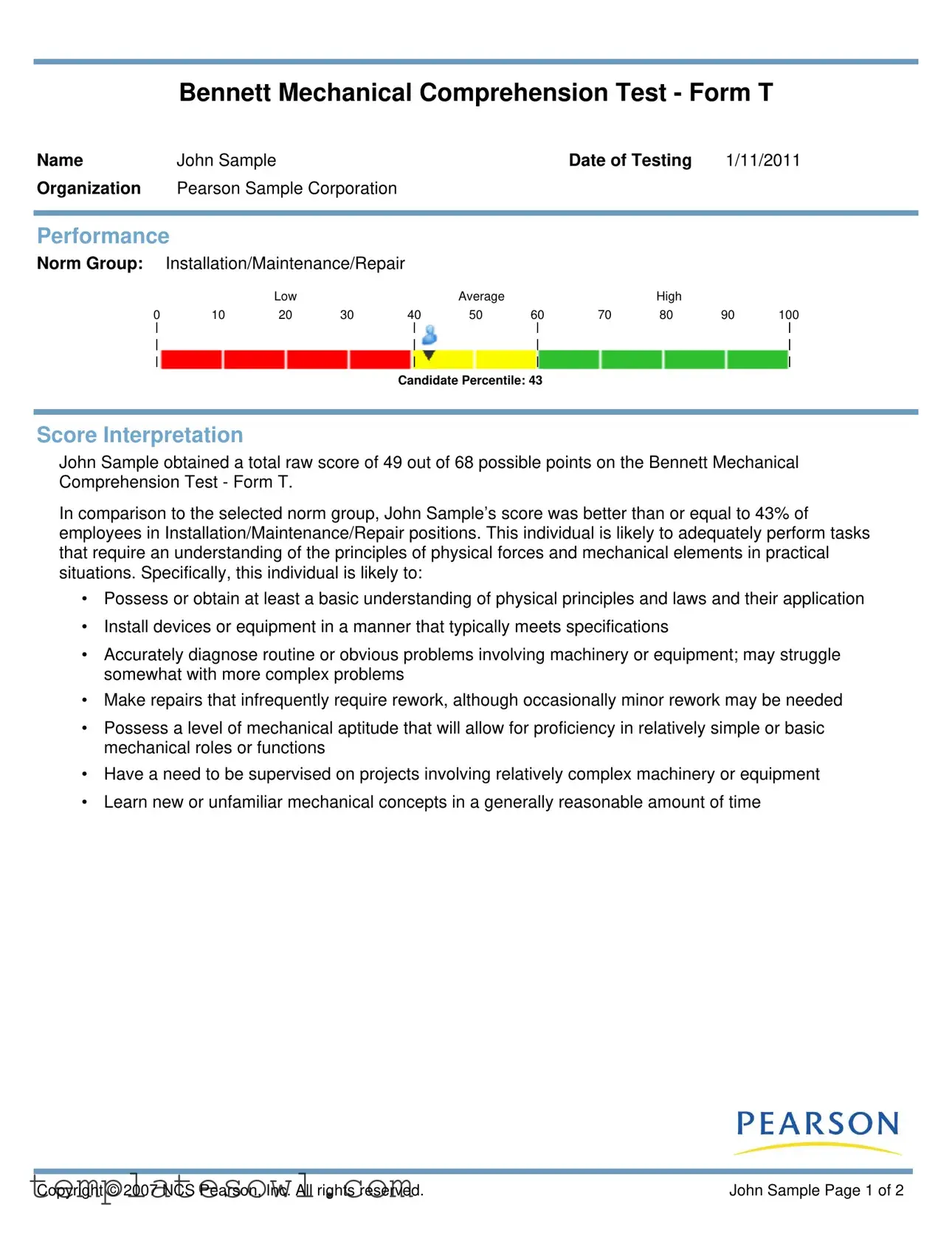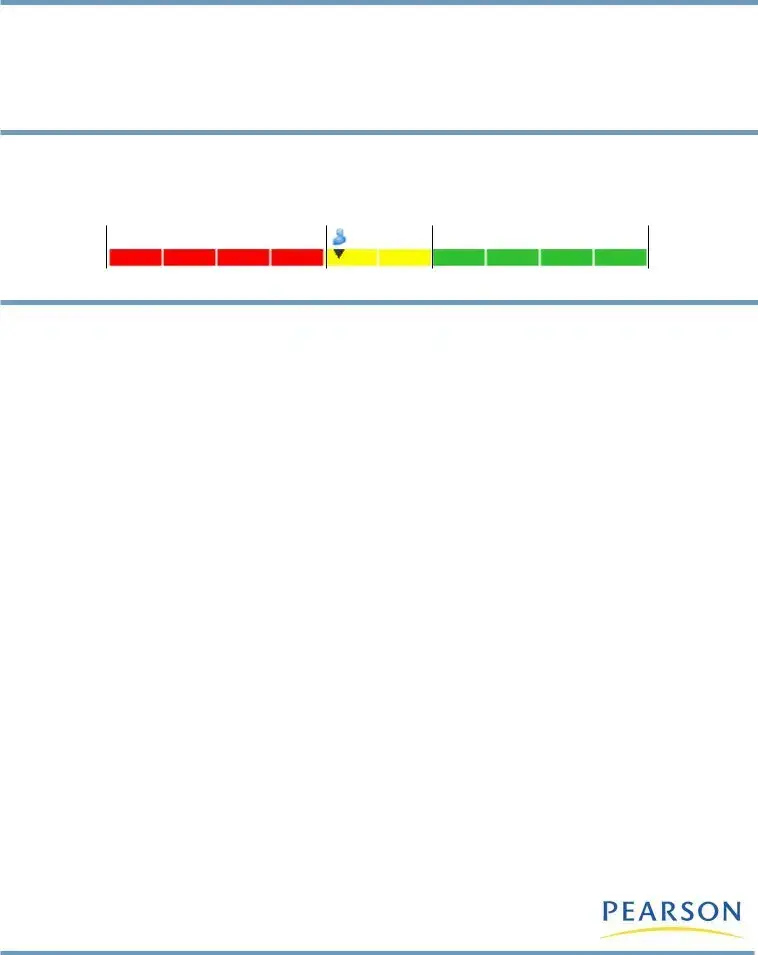What is the Bennett Mechanical Comprehension Test?
The Bennett Mechanical Comprehension Test is an assessment designed to evaluate a person's ability to understand and apply mechanical principles. It focuses on how well individuals perceive and relate to physical forces and mechanical elements in practical situations. This test is often used in job settings and training programs where mechanical comprehension is essential.
How is the test scored?
The test consists of a total of 68 possible points. A raw score is calculated based on the responses given by the candidate. This score is then compared to a norm group, typically composed of individuals in roles related to installation, maintenance, and repair. For example, obtaining a score that places you at the 43rd percentile means you performed better than or equal to 43% of this norm group.
What does a score of 49 out of 68 indicate?
A score of 49 suggests that an individual like John Sample is likely to perform adequately in roles requiring understanding of mechanical principles. This score reflects a basic understanding and ability to address routine tasks related to physical and mechanical concepts, while also highlighting areas where additional support or supervision may be beneficial.
What skills and abilities does the test assess?
The Bennett Mechanical Comprehension Test assesses various skills and competencies. It evaluates an individual's grasp of physical principles, their ability to accurately diagnose problems with machinery, and their capability to install and repair equipment. Those who do well often find it easier to learn the operation and repair of complex devices. However, it’s important to note that individuals may still need guidance when tackling more complex machines.
Can this test be used as the only criterion for hiring decisions?
No, the Bennett Mechanical Comprehension Test should never be the sole factor in making employment decisions. While it offers valuable insights into mechanical aptitude, it is only one piece of a larger puzzle. Employers are encouraged to use this test in conjunction with other assessment tools and best practices outlined in guidelines for employee selection procedures.


